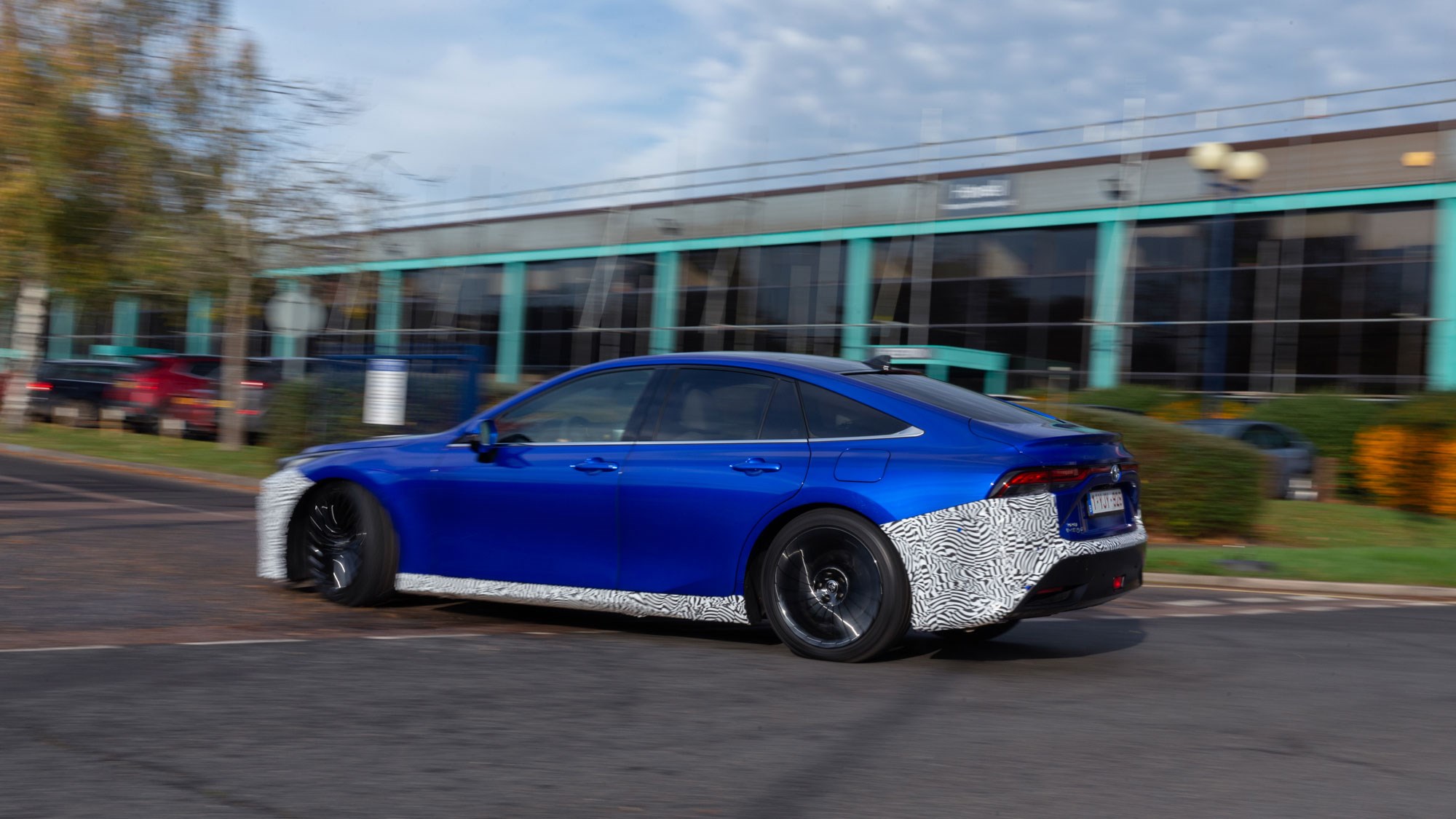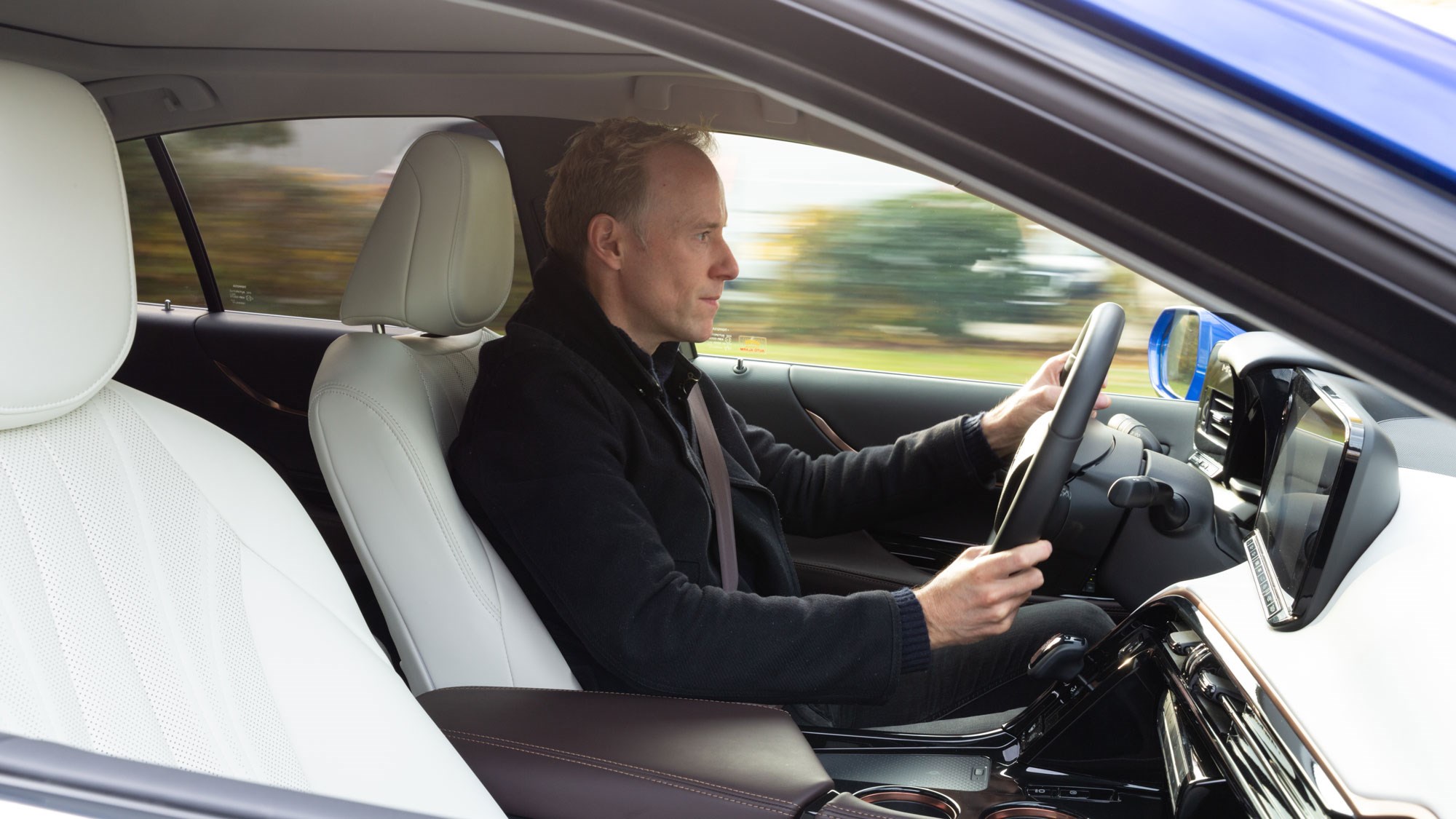► Second-gen Toyota Mirai, driven
► Range is up to 400miles
► But the infrastructure…
Toyota is a big believer in hydrogen fuel cell cars, and we’ve driven the car to prove it, the second-generation Mirai. It’s a zero emissions electric car, which produces its electricity on board by mixing hydrogen and oxygen in a fuel cell ‘stack’, with water and heat produced as waste. Yup, this is a Toyota with a far more convincing claim to be self-charging than the hybrids.

The Mirai embodies Toyota’s kaizen philosophy of continuous improvement. Compared with the first-generation Mirai from 2014, the new car’s fuel cell stack is smaller but more powerful, the car’s range has increased to just over 400 miles, and the vehicle is transformed from freaky Prius cousin to svelte Lexus clone. How does it drive? Read on for the full review.
Are hydrogen fuel-cell cars the future?
Mirai you say? Not sure I’ve ever seen one…

If you have seen a Mirai, you deserve a gold spotter’s badge: Toyota only produced 11,000 globally. Given that car makers typically lose money when introducing exotic technology, that’s no surprise.
In the UK, Toyota was coy about the list price – it was about £66,000 – but then you couldn’t really buy one: about 180 were leased, to fleets with access to hydrogen to fill its two tanks. The new Mirai will be more freely available when it arrives here in spring 2021, and Toyota is promising a 20 per cent reduction in the price, to around £50,000.

For that, you can also thank kaizen. A fuel cell used to take 15 minutes to manufacture; now it’s a matter of seconds. The filament winding process used to make the high-pressure hydrogen tanks robust and minimise leaks (hydrogen is incredibly abundant but incredibly tiny so prone to escape) has also been cut by a third. Economies of scale have also blossomed: tenfold, to 30,000 a year.
Enough of this Cobra Kai stuff. How punchy is it?
To drive, the Mirai feels like a full electric car – on a gap year in Goa. It doesn’t have an iPace or Tesla’s blistering turn of pace – propulsion comes from an immediate shove of torque but it rapidly plateaus – and lifting off triggers mellow slow-down: there’s none of that abrupt, confected deceleration on many EVs.
Overtaking a Mazda 6 on a B-road straight needs a decent gap, with 221lb ft of torque propelling a near-two tonne car. It’s no surprise the 0-62mph acceleration benchmark takes 9.2sec.
The Mirai e-motor’s peak power is 134kW (180bhp), limited by the output of the fuel cell stack and the supporting, LS500h-donated hybrid battery. This supplies the car under low loads and helps out when you floor it, but during steady driving power comes direct from the fuel cell stack.

This generates electricity by drawing hydrogen atoms through the fuel cell’s anode, which splits the molecules into electrons and protons. While the protons pass through the polymer electrolyte, the electrons are instead forced through an external circuit which forms an electrical current. The electrons finish their journey at the cathode, where they’re combined with protons and oxygen, generating the waste products of heat and water.
Okay. Where’s all that fuel cell kit housed?
The stack has been shrunk from 33 to 24 litres, and resulting power climbs by half to 5.4kW/litre. The downsizing makes it small enough to fit in the nose (in the Mk1, the driver mountaineered atop it), along with the pumps that bring external air and hydrogen to the stack. Relocating those helps make the new saloon so much quieter than the first model.
It also frees up space for a third hydrogen tank. The biggest tank is packaged along the car’s spine where the prop shaft would be, with the second and third tanks mounted transversely at the rear (see cutaway image), along with the hybrid battery.
Unfortunately packaging all these components makes rear accommodation tight: behind a six-foot driver, a similarly sized rear passenger will find headroom really lacking, legroom is hardly generous (it was a struggle to get my big boots in) and trunk space is down on a typical limousine’s.

And how’s the ride and handling?
The first Mirai drove the front wheels, betraying its link to the Prius; the new saloon rides on Toyota’s Global Architecture – Luxury, which underpins the Lexus LS and LC. All of which explains its 4.9m size, handsome saloon bodystyle, 50:50 weight distribution, epic civility and how it handles.
It’s quieter than the celebs in Madame Tussauds. The tranquility is remarkable: there’s an ethereal whine from the electric motor that turns the rear wheels, but it’s distant, even when intensified by the accelerator.

No tyre groan either: up to 40mph you’ll hear nothing but the muted ker-thunk of a 20-inch rim over a manhole – it’s like driving a sensory deprivation chamber. Aside from a lick of wind noise and tyre murmur, it barely gets much louder at motorway speeds. The soundproofing is ace, assisted by zero moving parts in fuel cells: anyone hoping chemistry in action sounds like an accident in a witch’s cauldron will be disappointed.
The light steering is effortless, steady but accurate, and the suspension softly-sprung. That makes for a cushy ride at higher speeds in particular, a bobbing nose under braking, Moto GP lean in corners, and some lapses into understeer on greasy, autumnal roundabouts. And that’s fine: the Mirai is a car for cruising, not careering around.

I like the sound of this: when can I get one?
Look, we need to talk about hydrogen first. A kilo of the gas costs around £10 to £15, and the Mirai’s tanks take 5.6kg. So filling up the Toyota would set you back around £80, which is similar to a petrol limo. It would take a similar 5 minutes to fill up: none of the hour-long waits that hamper pure electric cars.
That said, you might need to drive for hours to find a filling station first. The number of sites is barely into double figures, which is a massive issue. When you do gas it up, Toyota reckons you’ll be able to travel just over 400 miles, up 30 per cent over the Mk1 thanks to greater tank capacity and fuel cell improvements.

If the refuelling challenges and running costs don’t make a compelling case, the emissions do. After a few initial exertions, the Mirai began puffing out clouds like a 10-year-old diesel – thankfully of water vapour.
Indeed, Toyota’s got a neat line: the Mirai isn’t zero emissions in use, but ‘minus emissions’ – because its air purification system purges any nasties before the oxygen reaches the fuel cell. One button is unusually marked H2O: use it to dump excess water, but do it on the move else you’ll leave a puddle on the garage floor.

Verdict
Toyota has a vision for a hydrogen society, with the abundant element used as a significant power source in industry and transport. For example, hydrogen fuel cells are seen as a plausible way to wean big trucks off diesel and up to the zero emissions standard: fleets with predictable routes and the ability to instal refuelling pumps could spearhead the adoption of H2-powered vehicles.
The Mirai is proof that the concept could work in cars, with smaller scale fuel cell stacks. Indeed this refined and luxurious car feels equivalent to the Prius Mk2 moment. That was when Toyota’s hybrid came of age with its aerodynamic teardrop shape, stepchange in fuel economy and a tiny bit of pure electric range. The Mirai is a similar breakthrough for hydrogen fuel cells.